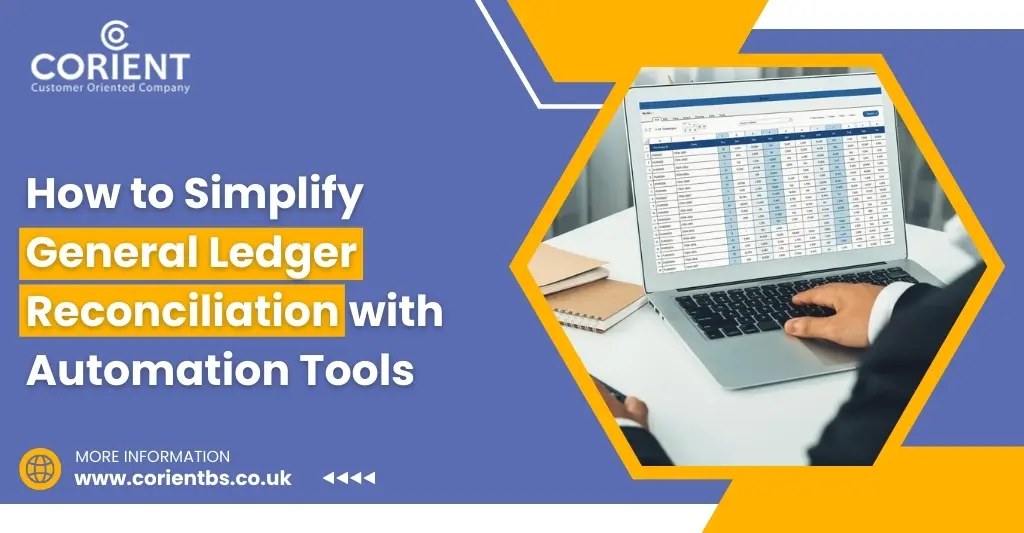
How to Simplify General Ledger Reconciliation with Automation Tools
As an accounting firm, your goal is always to ensure that your client’s business runs smoothly and efficiently. For that, you will have to take care of multiple functions while conducting business. One of the most important aspects is the General Ledger and General Ledger Reconciliation.
The general ledger is an activity where every financial transaction that occurs during the business process is compiled into an accounting record. These transactions are also recorded in the books in the form of journal entries, which are raw, basic data arranged in chronological order.
Arrange transactions in the general ledger according to their accounts to streamline the accounting process. It features five different categories: equity, asset, liability, expense, and revenue/income. Furthermore, these categories can be further divided based on the transaction types they are related to.
In short, the general ledger is a master document that business analysts can use to prepare other financial documents, such as cash flow statements, balance sheets, and income statements. However, before that, you will have to ensure the accuracy of the general ledger so that accurate reports are prepared, and that can be ensured only through general ledger reconciliation.
What is General Ledger Reconciliation?
Under the general ledger reconciliation process, your accountants will check the accuracy of the account balances recorded on the general ledger of your client’s firm. The accuracy is checked against documentations such as bank statements, audit reports, and old third-party data.
Furthermore, you must conduct a detailed examination of your client’s general ledger under general ledger reconciliation to identify errors, discrepancies, and unusual transactions, ensuring proper and timely action to rectify them.
Your accounting firm can handle these reconciliations alone, but sometimes the workload may overwhelm you. In that case, you can outsource to an accounting service provider such as Corient Business Solutions, which offers professional bookkeeping services.
What Are the Types of General Ledger Reconciliations?
There are 3 major types of general ledger reconciliation processes, each described in detail below. Let’s go through them one at a time.
Customer Reconciliations
Under it, account balances are verified with customers by going through the invoicing and comparing those figures with the outstanding accounts receivable balance in your client’s firm general ledger. You can also contact your client’s previous customers to be doubly sure of the balance, especially the accounts receivable.
Bank Reconciliations
In this reconciliation type, you will have to conduct a reconciliation process with the bank and compare the information in the general ledger with the bank reports. These reports can include bank statements, investment reports, mortgage statements, credit card statements, loan statements, or any other relevant third-party documentation.
Vendor Reconciliations
Your client may also ask you to request its vendors for past invoices and reports to check if the accounts payable balance recorded in the general ledger matches the vendor’s records.
How to Prepare for General Ledger Reconciliation?
The reconciliation process usually starts at the end of the financial reporting period. Your accountants will have to go through each account in the general ledger and check whether the recorded balance is reliable. Thereafter, you will have to complete the entire process by following the steps listed below.
Collecting Important Information Related to General Ledger Account
The first step in the general ledger reconciliation process is to get all the relevant information related to the general ledger account that your client wants to reconcile. In most reconciliations, you will require the general ledger account balance of that period end, also called the ending balance.
Apart from that, you will also need to know the financial activities that had taken place during the accounting period, which simply means the number of credits and debits made to that account.
Getting the Account Balances Reconciled Against the Relevant Documents
After collecting all the relevant information, you must compare the account balance of the general ledger with independent sources and relevant documents such as bank reports and credit card statements. Overall, this is an important component of the reconciliation process, and your accountants need to validate the account balances in the firm’s general ledger.
Take Care of Any Discrepancies
Your accountants may face a situation where they may come across discrepancies between supporting documents and the account balance of your client’s general ledger. Various factors cause these discrepancies, such as differences in the timing of transaction recording, missing financial transactions entirely, human error, and many more. However, it is essential to note that only some discrepancies can be a mistakes in the general ledger account balance. Therefore, you must inspect the cause behind each discrepancy to identify the root cause before taking action.
Prepare to Adjust any Journey Entries Whenever Appropriate.
In the future, if the accountant confirms that a corrective journey entry is compulsory, they would need to prepare a journey entry with all of its errors eliminated.
You will appropriately record all this in a secure database for future auditing purposes. This concludes the general ledger reconciliation process, which you must complete before publishing the financial statements to the general public.
By now, you may have realized that the benefits of general ledger reconciliation process is quite time-consuming because it requires you to gather and review all the relevant information from various sources. Therefore, manually performing this process is quite painstakingly slow and increases the chances of errors. All this makes the process complex.
However, there is one way to simplify general ledger reconciliation, and that is by automating the process using an automated software solution. Without it, you will have to invest considerable time and money in recruiting people to manage the process. But through automation, accountants can automate and streamline the whole process.
Using the best general ledger reconciliation software, your accountants will be able to quickly access all the reports from various systems. Moreover, the software will help compare the information and certify it once the system has confirmed the data between both sources.
The software will easily identify inaccuracies and alert the respective departments about them. This way, your accountant will save time and focus on more important tasks. It is safe to say that from getting data from various sources to creating financial reports, the general ledger reconciliation software has everything covered for you.
Conclusion
We highly recommend the reconciliation exercise for firms interested in boosting their image and financial status. Communicate this to your client firms. Through the general ledger reconciliation process that follows International Financial Reporting Standards (IFRS) or Generally Accepted Accounting Principles (GAAP), you can ensure the accuracy of financial documents, thus ensuring reliability and strengthening your client’s ability to make firm decisions.
However, we understand that it is a time-consuming and labour-intensive process. Your clients may prefer to delegate this responsibility to you, but let’s face it: no matter how experienced you are, it will burden you and your accounting team.
To simplify general ledger reconciliation, you can invest in software to automate the process, which will only increase your financial burden. In this case, it would be wise to outsource the responsibility to a professional and experienced accounting service provider such as Corient Business Solutions.
Along with general ledger reconciliation, we also offer bookkeeping, year-end, management accounts, VAT, and outsourced payroll services. We hope to set up an online meeting at your convenience so that we can understand your requirements and explain our services in detail.


